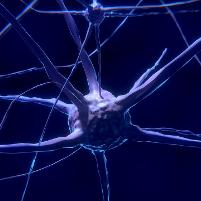This blog discusses a recent breakthrough in AI that has the potential to accelerate the development of autonomous vehicles and robotics. These advancements are bringing AI systems closer to human capabilities sooner than anticipated. While there are valid concerns about controlling AI and minimising potential harms, there is considerable potential to harness AI to benefit older adults, who may constitute the majority of robotics users in the future. However, this topic has yet to receive adequate attention. Advocating for the needs and preferences of older adults in the development of AI products and training data is crucial. If not satisfactorily addressed, commercial applications may primarily target younger populations, leaving their older counterparts to adapt to tools not tailored to their needs. Active advocacy for AI's unique benefits for older adults could lead to innovative health and social care systems and service solutions.
Modern AI systems are based on Neural Networks (NNs), a powerful machine learning architecture that draws inspiration from the structure and function of the human brain. It also plays a vital role in various domains, such as computer vision, natural language processing, speech recognition, and recommendation systems. NNs learn from data through training, where they iteratively adjust their internal parameters using labelled datasets. This training phase enables NNs to optimise performance, enhance generalisation, and make predictions on ‘unseen data’. However, this training process typically requires substantial data to tune its numerous internal parameters effectively. While abundant text data is available for training models like GPT-3 (the technology behind ChatGPT), the availability of driving video data for training NNs in autonomous driving is limited. For instance, GPT-3, with its 170 billion parameters and extensive training set, surpasses the reading capacity of any one individual across their entire lifetime.
A new type of NNs, known as Liquid NNs, have recently emerged and gained attention. The latter offers advantages in processing continuous-time information and mimicking brain function, such as interactions between neurons and synapses, to process information. Liquid NNs have smaller parameter sizes, are more adaptable, and have an improved capability for handling noisy data, making them suitable for applications such as autonomous vehicles and robotics. However, applying the complex mathematics of differential equations, which model information flow in the brain, poses computational challenges. A class of these equations developed a century ago were almost impossible to solve analytically and continue to be computationally expensive to approximate even with modern computers.
A significant breakthrough occurred when a Massachusetts Institute of Technology (MIT) team found an analytical solution to these neuron-synapse interaction equations. This advancement allows Liquid NNs to benefit from this modelling approach without relying on time-consuming numerical computations. As a result, Liquid NNs can be built with fewer parameters, making them efficient in processing continuous-time information, such as for controlling autonomous cars. As a proof of concept, researchers have shown that a new breed of Liquid NNs with just nine neurons can drive an autonomous vehicle, thereby outperforming traditional NNs. Suppose we contrast this driving system of nine neurons to the size of the human brain, which contains one hundred billion neurons, we can then appreciate how compact this new architecture is. The new Liquid NNs variant can also handle noisy data by focusing on essential information and disregarding noise.
Furthermore, the new type of NNs that are based on this recent formulation of the brain’s neuron-synapse equations, which takes away much of the computational complexity, is expected to be small enough to learn and adapt in real-time. NNs typically undergo their training phase before deployment, for example, the freely available ChatGPT completed its training phase nearly two years ago before going online. However, the new Liquid NNs have the potential for real-time learning and adaptation; a significant development. These breakthroughs bring AI systems closer to emulating human thinking and open up possibilities for robotics and other autonomous applications.
Liquid NNs also provide AI systems with the potential for improved interactions with their surroundings without the need for huge data resources (similar to the architecture of their NN forerunners). Conceptually, NNs mostly learn from formulas and equations rather than vast amounts of data. This capability allows AI systems to learn about their surroundings in an improved way and resembles how humans learn about the physical world.
In several benchmark tests, the new variant of Liquid NNs has demonstrated superior performance compared to other types of NNs. For example, they excel in physical dynamics modelling, sequential image processing, and sentiment analysis. Additionally, their versatility and effectiveness make them highly valuable in various AI applications that do not require costly computational power or where vast training data is unavailable.
The world's ageing population and their associated long-term care needs are domains with significant potential for the application of autonomous vehicles and robotics. The advancement of these technologies could significantly benefit older individuals by providing assistance, enhancing mobility, and improving their overall quality of life. Therefore, the importance of focusing on innovations in these fields to cater to ageing populations’ needs should be emphasised. To ensure that these advancements are practical and beneficial for older adults, the latter must be sufficiently represented in the training sets of AI systems. While the primary functionality for controlling an autonomous vehicle or robot may remain the same across different user groups, the interface between this control and the surrounding context can vary based on age group. By including data from older adults in training sets, we can ensure that diverse cognitive abilities and preferences are represented. This will help designers develop end products better suited to older adults' needs and requirements. Consequently, considering older adults’ unique perspectives and experiences in the training data will lead to more inclusive and user-friendly AI systems.
In conclusion, the rise of Liquid NNs represents an exciting advance in AI research. We may be on the cusp of the accelerated evolution of AI robotics. As with any transformative technology, regulations and commercial factors will likely shape AI's evolution. However, amidst these processes, it is of paramount importance to prioritise the needs of older adults in AI development. Because they represent a growing user group, older adults should have a voice in shaping these technologies. By doing so, we can harness the true potential of AI to enhance the lives of people across all age groups and create a more equitable and compassionate society.
About the author: Mohamed Ismail is an Affiliate Research Fellow at the Oxford Institute of Population Ageing. His research focuses on the ageing dynamics and estimating the cost of care, particularly in the Middle East and North Africa (MENA) region.
Opinions of the blogger is their own and not endorsed by the Institute
Comments Welcome: We welcome your comments on this or any of the Institute's blog posts. Please feel free to email comments to be posted on your behalf to administrator@ageing.ox.ac.uk or use the Disqus facility linked below.













